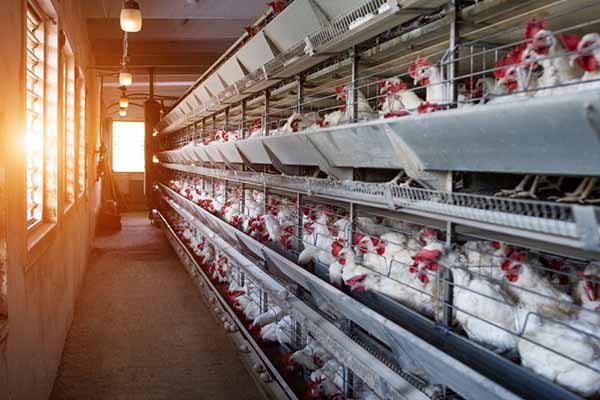Environmental Protection Requirements for Kenyan Chicken Farms
Time : 2025-04-25
Kenyan chicken farms have been an integral part of the country’s agriculture sector, providing a vital source of protein for the local population. However, with growth comes responsibility, especially when it comes to environmental protection. In this article, we’ll delve into the key environmental protection requirements that Kenyan chicken farms need to adhere to, ensuring a sustainable and eco-friendly operation.
Introduction to Environmental Protection in Chicken Farms
Environmental protection is not just about reducing waste and pollution; it’s about creating a balanced ecosystem that supports the farm’s operations while minimizing its impact on the environment. For Kenyan chicken farms, this means implementing various measures to manage waste, control disease, and conserve resources.
1. Waste Management
Waste management is a cornerstone of environmental protection in chicken farms. Here’s what Kenyan farmers should consider:
1.1 Composting of Manure
One of the most effective ways to manage poultry waste is through composting. This process turns manure into a valuable fertilizer that can be used on the farm. It’s important to ensure that the composting process is well-managed to prevent the spread of disease and the release of harmful gases.
1.2 Proper Disposal of Non-Recyclable Waste
Non-recyclable waste, such as plastic packaging and cardboard boxes, should be properly disposed of to avoid environmental contamination. Some chicken farms are investing in recycling programs to reduce their waste footprint.
2. Water Usage and Conservation
Water is a precious resource, and Kenyan chicken farms need to be mindful of their water usage. Here are some strategies to consider:
2.1 Efficient Irrigation Systems
Implementing efficient irrigation systems can significantly reduce water usage. Drip irrigation, for example, delivers water directly to the plant roots, minimizing waste.
2.2 Rainwater Harvesting
Collecting rainwater can provide a supplemental water source for farm operations. Constructing rainwater harvesting systems can be a sustainable solution for Kenyan chicken farms.
3. Biodiversity and Habitat Protection
Chicken farms can play a role in promoting biodiversity and protecting local habitats. Here’s how:
3.1 Buffer Zones
Creating buffer zones around the farm can help protect natural habitats and wildlife. These areas can act as natural barriers against the spread of diseases and pests.
3.2 Habitat Restoration
Restoring degraded habitats on or near the farm can create a more balanced ecosystem, providing food and shelter for local wildlife.
4. Disease Control and Biosecurity
Disease control is crucial for the sustainability of chicken farms. Implementing biosecurity measures can help prevent the spread of diseases, both within the farm and to the wider environment:
4.1 Regular Vaccinations
Vaccinating poultry against common diseases is an essential part of biosecurity. This not only protects the farm’s birds but also reduces the risk of disease transmission to wild bird populations.
4.2 Proper Waste Disposal
As mentioned earlier, proper disposal of waste is key to preventing disease spread. This includes ensuring that manure is composted and disposed of in a way that doesn’t contaminate water sources.
5. Energy Efficiency
Reducing energy consumption is another way Kenyan chicken farms can contribute to environmental protection:
5.1 Solar Power
Investing in solar panels can provide a clean energy source for the farm, reducing reliance on fossil fuels and lowering carbon emissions.
5.2 Energy-Efficient Lighting
Using energy-efficient lighting systems in poultry houses can significantly reduce electricity consumption.
Conclusion
Environmental protection is a multifaceted challenge for Kenyan chicken farms. By implementing the strategies outlined above, farmers can create a more sustainable and eco-friendly operation. It’s a win-win situation, where the farm benefits from reduced costs and improved productivity, and the environment benefits from responsible agriculture practices.
Stay tuned for more articles on sustainable farming practices and environmental protection.
Tags












